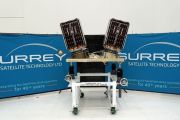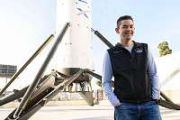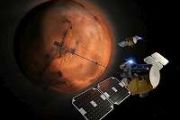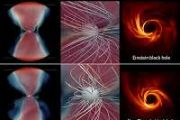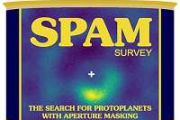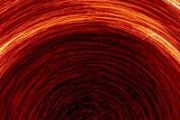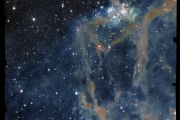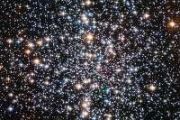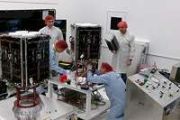
Copernical Team
ESA funds development of CRIMSON project for space debris removal and in-orbit servicing
 In September 2024, AROBS Polska and AROBS Engineering, both part of the AROBS Group, initiated the "Close Proximity Operations Control Unit Development and Qualification" (CRIMSON) project. This initiative, funded by the European Space Agency (ESA) under its Clean Space program, addresses the critical need for a versatile control unit for Low Earth Orbit (LEO) missions, including Active Debris R
In September 2024, AROBS Polska and AROBS Engineering, both part of the AROBS Group, initiated the "Close Proximity Operations Control Unit Development and Qualification" (CRIMSON) project. This initiative, funded by the European Space Agency (ESA) under its Clean Space program, addresses the critical need for a versatile control unit for Low Earth Orbit (LEO) missions, including Active Debris R A New Space Race: Bloomberg's Critique, NASA's Future, and the Geopolitical Stakes
 As the 2024 U.S. presidential election approaches, it's clear that the stakes extend far beyond domestic issues like healthcare and the economy. The next administration will inherit a pivotal moment in space exploration - particularly NASA's Artemis program, which has faced growing scrutiny for cost overruns and delays. In a recent op-ed, Michael R. Bloomberg sharply criticized the program, fram
As the 2024 U.S. presidential election approaches, it's clear that the stakes extend far beyond domestic issues like healthcare and the economy. The next administration will inherit a pivotal moment in space exploration - particularly NASA's Artemis program, which has faced growing scrutiny for cost overruns and delays. In a recent op-ed, Michael R. Bloomberg sharply criticized the program, fram SpaceX launches 99th operational mission of the year
This request seems a bit unusual, so we need to confirm that you're human. Please press and hold the button until it turns completely green. Thank you for your cooperation!
Press and hold the button
If you believe this is an error, please contact our support team.
185.132.36.159 : 32dba59d-3826-4b2a-a8ef-1e0440b2
Emilia-Romagna hit by severe flooding
 Image:
Cities in Emilia-Romagna, a region in northern Italy, have been hit by severe flooding after heavy rainfall over the weekend. Flooded areas are visible in this multi-temporal image captured by the Copernicus Sentinel-1 mission. The comparison uses an
Image:
Cities in Emilia-Romagna, a region in northern Italy, have been hit by severe flooding after heavy rainfall over the weekend. Flooded areas are visible in this multi-temporal image captured by the Copernicus Sentinel-1 mission. The comparison uses an Mission Control and Spire Partner to Enhance AI Capabilities in Space
 Spire Global, Inc. (NYSE: SPIR) and Mission Control announced at the International Aeronautical Congress (IAC) a new initiative focused on advancing artificial intelligence (AI) capabilities in space through the Persistence Mission. This mission aims to demonstrate how AI can be effectively integrated into satellite operations, enabling real-time analysis and insights over extended periods.
Spire Global, Inc. (NYSE: SPIR) and Mission Control announced at the International Aeronautical Congress (IAC) a new initiative focused on advancing artificial intelligence (AI) capabilities in space through the Persistence Mission. This mission aims to demonstrate how AI can be effectively integrated into satellite operations, enabling real-time analysis and insights over extended periods. Future of Copernicus Sentinel Expansion missions secured
 The Copernicus Sentinel Expansion Missions are poised to significantly advance Europe's Earth observation capabilities, following the confirmation of funding for the development of all six missions. This progress is largely attributed to the United Kingdom's recent decision to rejoin the European Union's Copernicus programme, ensuring the completion of these important missions. The announcement
The Copernicus Sentinel Expansion Missions are poised to significantly advance Europe's Earth observation capabilities, following the confirmation of funding for the development of all six missions. This progress is largely attributed to the United Kingdom's recent decision to rejoin the European Union's Copernicus programme, ensuring the completion of these important missions. The announcement NASA Pilots Add Perspective to Research
 NASA research pilots are experts on how to achieve the right flight-test conditions for experiments and the tools needed for successful missions. It is that expertise that enables pilots to help researchers learn how an aircraft can fly their technology innovations and save time and money, while increasing the innovation's readiness for use.
NASA pilots detailed how they help researchers f
NASA research pilots are experts on how to achieve the right flight-test conditions for experiments and the tools needed for successful missions. It is that expertise that enables pilots to help researchers learn how an aircraft can fly their technology innovations and save time and money, while increasing the innovation's readiness for use.
NASA pilots detailed how they help researchers f VAST sets new standard for testing future space communication frequencies
 A new advanced hardware system known as the Sub-Millimetre Wave Validation Standard Antenna, or VAST, will serve as a critical test target for Europe's satellite antenna test facilities. Though not designed for space missions directly, VAST is engineered to validate the measurement of complex radio frequencies used in future space operations.
"The VAST is a well-characterised, mechanically
A new advanced hardware system known as the Sub-Millimetre Wave Validation Standard Antenna, or VAST, will serve as a critical test target for Europe's satellite antenna test facilities. Though not designed for space missions directly, VAST is engineered to validate the measurement of complex radio frequencies used in future space operations.
"The VAST is a well-characterised, mechanically Near-Earth Microquasar found to emit powerful gamma radiation
 For decades, astronomers have focused on distant galaxies as the source of high-energy electromagnetic radiation. However, new observations from the HAWC observatory have revealed that microquasars - compact binary systems within our own galaxy - are also capable of producing gamma photons with extremely high energies.
Researchers from the High-Altitude Water Cherenkov Gamma-Ray Observator
For decades, astronomers have focused on distant galaxies as the source of high-energy electromagnetic radiation. However, new observations from the HAWC observatory have revealed that microquasars - compact binary systems within our own galaxy - are also capable of producing gamma photons with extremely high energies.
Researchers from the High-Altitude Water Cherenkov Gamma-Ray Observator Astronomers detect ancient lonely quasars with murky origins
 A quasar is the extremely bright core of a galaxy that hosts an active supermassive black hole at its center. As the black hole draws in surrounding gas and dust, it blasts out an enormous amount of energy, making quasars some of the brightest objects in the universe. Quasars have been observed as early as a few hundred million years after the Big Bang, and it's been a mystery as to how these ob
A quasar is the extremely bright core of a galaxy that hosts an active supermassive black hole at its center. As the black hole draws in surrounding gas and dust, it blasts out an enormous amount of energy, making quasars some of the brightest objects in the universe. Quasars have been observed as early as a few hundred million years after the Big Bang, and it's been a mystery as to how these ob 

